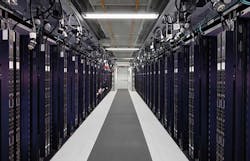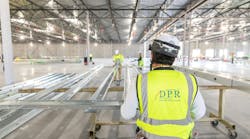The Data Center Frontier Executive Roundtable features insights from industry executives with lengthy experience in the data center industry. Here’s a look at the insights from George Slessman, Chief Executive Officer and co-founder of DCX.
George is the Founder and CEO of DCX.us, CR8DL.ai, and GYPC.ai, where he leads a team of highly skilled innovators and experts. Prior to founding these companies, George was involved in several successful technology businesses, including Sterling Network, IO Data Centers, and Baselayer.
With his proven track record of success and expertise in the industry, George is dedicated to bringing the same level of excellence to every project he undertakes. He continues to push the boundaries of technology and transform IT infrastructure to meet the ever-evolving needs of businesses and individuals alike.
Here’s the full text of George Slessman's insights from our Executive Roundtable:
Data Center Frontier: The arrival of generative AI technologies, popularized by ChatGPT, has the potential to disrupt search and other leading Internet businesses. How might the huge interest in generative AI bring changes in data center hardware and design?
George Slessman, DCX:: If we presume that the current state of the art in deep learning is the paradigm advanced for learning systems in the near and mid-term, the Data Center (capital D, capital C – full stack, space, power, cooling, network, storage, compute) will see dramatic changes; in use, architecture and location.
Specialty accelerators (GPU, TPU, IPU, etc) will be the defining feature for compute node architecture and for data center power design with significant power concentration and utilization (more and higher), distance between accelerators will be the driving force to increase density - well beyond current standards and locations will need to be highly distributed to support low latency at scale inferencing with a number of very large scale training nodes.
Traditional enterprise and service provider data center design will need to be replaced or completely refactored to support this paradigm. I believe Facebook announced this a few months ago… DCX has built an entirely new Data Center platform on this premise.
Data Center Frontier: After years of trending lower, pricing for data center capacity increased in 2022. What lies ahead for data center pricing, and what are the primary factors that will influence where prices go in the future?
George Slessman, DCX:: Supply chains can only be as efficient as the supply. Until the supply chain – capital, people, materials and goods - become universally more accessible as they were pre-pandemic, we will see costs continue to rise across the board leading to increased cost for data centers, built or leased.
The interesting thing to watch – will the AI revolution be THE inflection point of obsolescence for the majority of built data centers? With an eye to the balance sheet, I think the higher for longer interest environment will also be a major headwind for current data center platforms that have significant low cost debt and leverage levels based on 2021-2022 cap rates.
Data Center Frontier: In early 2023 we’ve seen several announcements of plans for hydrogen-powered data centers. What are the potential benefits and barriers to the use of hydrogen in data center power?
George Slessman, DCX:: I have no relevant experience with hydrogen powered systems.
Data Center Frontier: As campuses get larger and some primary markets experience constraints on land or power, what are the characteristics that will define growth markets in the next several years?
George Slessman, DCX:: Data centers will continue to chase four things: low cost/available power, tax incentives, network access and accommodating regulation. Where these dimensions overlap, data centers will emerge.
About the Author




